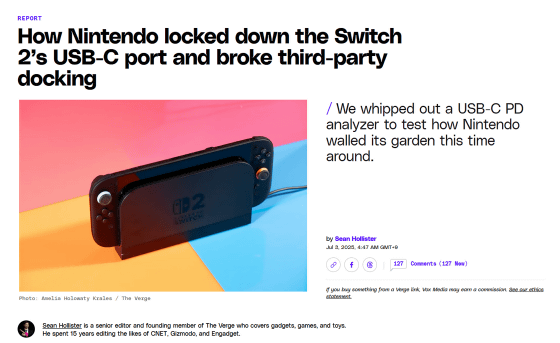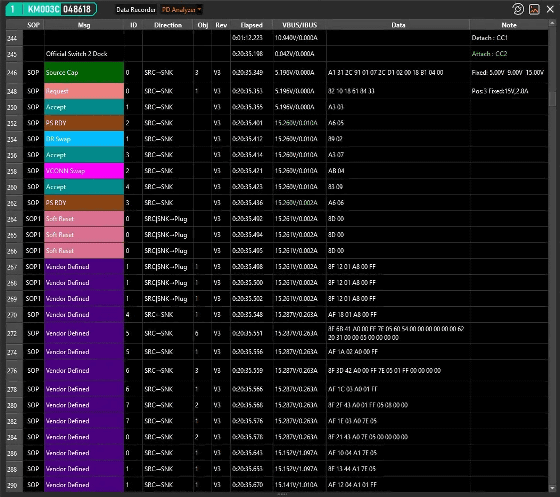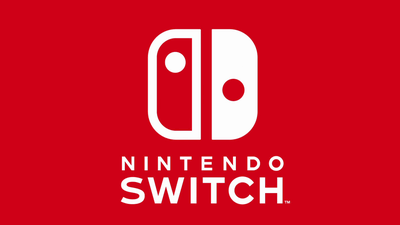Nintendo Switch 2's USB Type-C port uses proprietary encryption to eliminate third-party docks

Nintendo's next-generation home video game console,
How Nintendo locked down the Switch 2's USB-C port and broke third-party docking | The Verge
https://www.theverge.com/report/695915/switch-2-usb-c-third-party-docks-dont-work-authentication-encryption

The Nintendo Switch 2 has been attracting attention as Nintendo's next-generation home video game console, and in Japan, many people lost out in the 4th official lottery sale. The application period for the 5th official lottery sale will be from July 2nd to 24th at 11:00 a.m.
You can check out the photo review of Nintendo Switch 2 in the article below.
Nintendo's 'Nintendo Switch 2' has finally arrived, so we'll take a closer look at the main unit, including a photo review of the Joy-Con 2 attached by magnetism, an ultra-high-speed HDMI cable, and an AC adapter with a maximum capacity of 60W - GIGAZINE

You can find out how to transfer all games purchased on your Nintendo Switch to your Nintendo Switch 2 using the 'Full Transfer' method by reading the following article.
A complete explanation of the procedure for successfully transferring the entire game to the Nintendo Switch 2, transferring save data, main unit settings, and game screenshots from the Nintendo Switch directly via local communication - GIGAZINE

The Nintendo Switch 2 comes with an official dock, which allows you to connect to a TV or display via the dock and play games on a large screen. In the previous generation of Nintendo Switch, various third parties sold docks with their own functions and shapes, but with the Nintendo Switch 2, third-party docks have been almost completely eliminated.
Technology media The Verge reports that 'Nintendo intentionally destroyed the Nintendo Switch 2's compatibility with these devices by using a new encryption method and a dedicated encryption chip,' two accessory makers told The Verge.
The Verge said they haven't found any evidence that the Nintendo Switch 2 has an encryption chip, but that testing with the Power-Z KM003C multifunction USB tester found that Nintendo is using its own code to block third-party docks.
Generally, when a device is connected to a dock or computer via a USB Type-C port, standardized communication takes place via the USB PD protocol to ensure proper power supply and signal transmission. However, when The Verge used the Power-Z KM003C to analyze data exchanged between the Nintendo Switch 2 and the official dock, it was found that the two devices communicated in their own 'vendor-defined' language. This specification seems to prevent third-party docks from working.
Below are some screenshots from The Verge of the interaction between the Nintendo Switch 2 and the official dock, recorded via the Power-Z KM003C:

At the time of writing, there are only a few third-party docks that claim to be compatible with the Nintendo Switch 2, such as the Antank S3 Max . The Antank S3 Max sends coded messages that are not exactly the same as Nintendo's proprietary code, but are almost identical.
You can check out the official video below to see how the Nintendo Switch 2 docks with the Antank S3 Max.
The First 3rd Part Docking Station for Switch 2? - YouTube
However, Nintendo may update the system to maintain the security of the device and further strengthen the lockout of third-party docks. Antank's representative acknowledged this, but said that the Antank S3 Max supports firmware updates, so in theory it could maintain compatibility even if Nintendo changes the authentication key in the future.
Some say it makes sense for Nintendo to eliminate third-party docks, since a poor quality dock could damage the Nintendo Switch 2 and increase inquiries to customer service. On the other hand, the official dock is designed to be stationary, making it somewhat inconvenient to carry around, and it is not compatible with glass screens such as the Xreal One , so there are still users who want a third-party dock.
The Verge asked Nintendo about the Switch 2's use of an encryption chip to lock down its video output, but the company declined to comment.
Related Posts:






